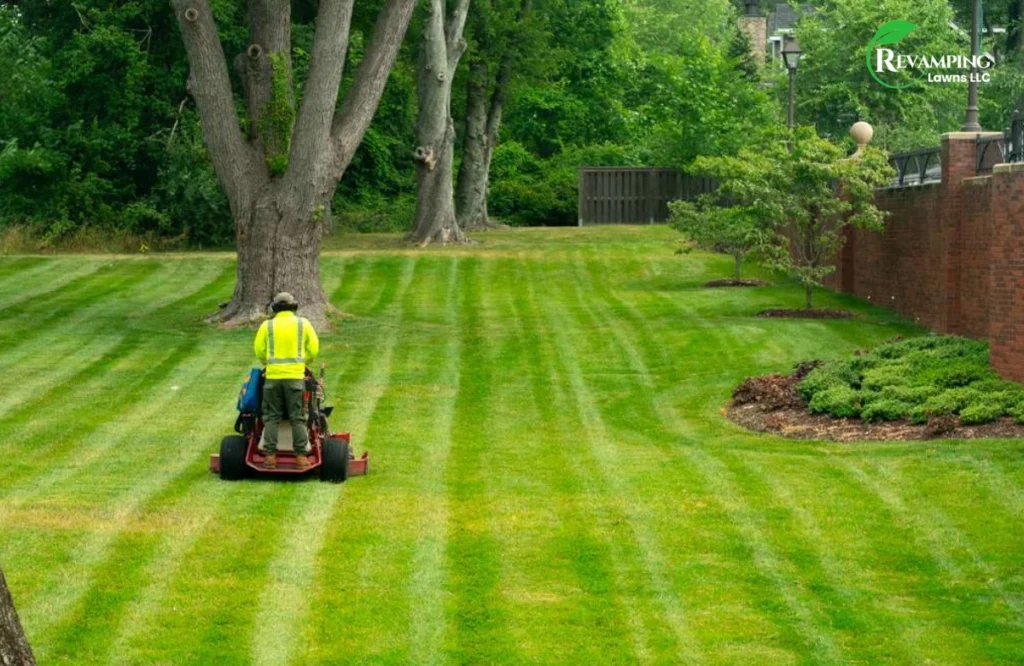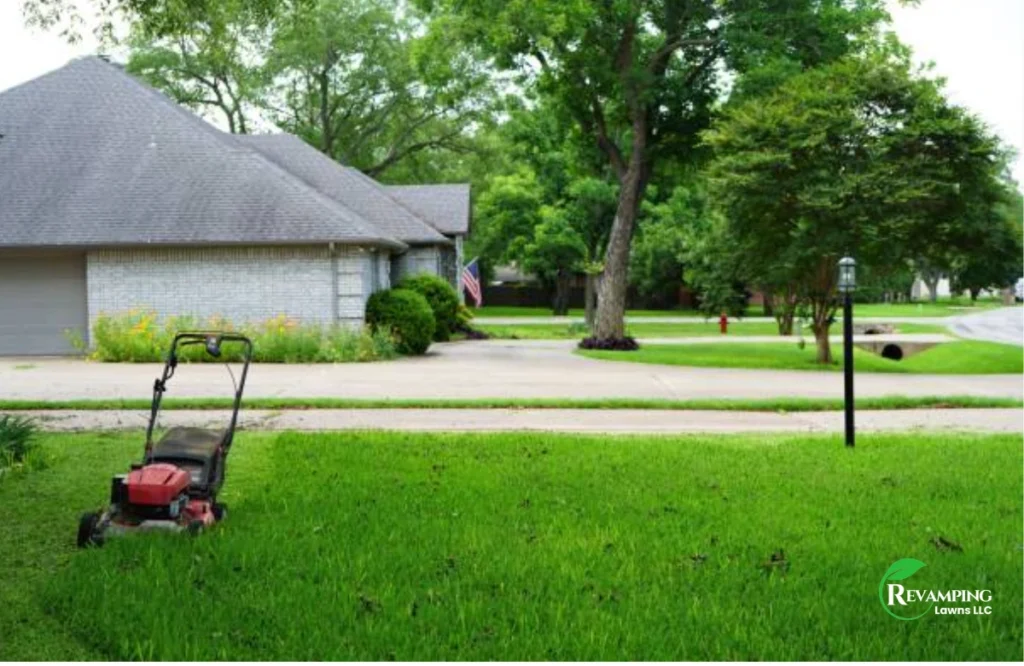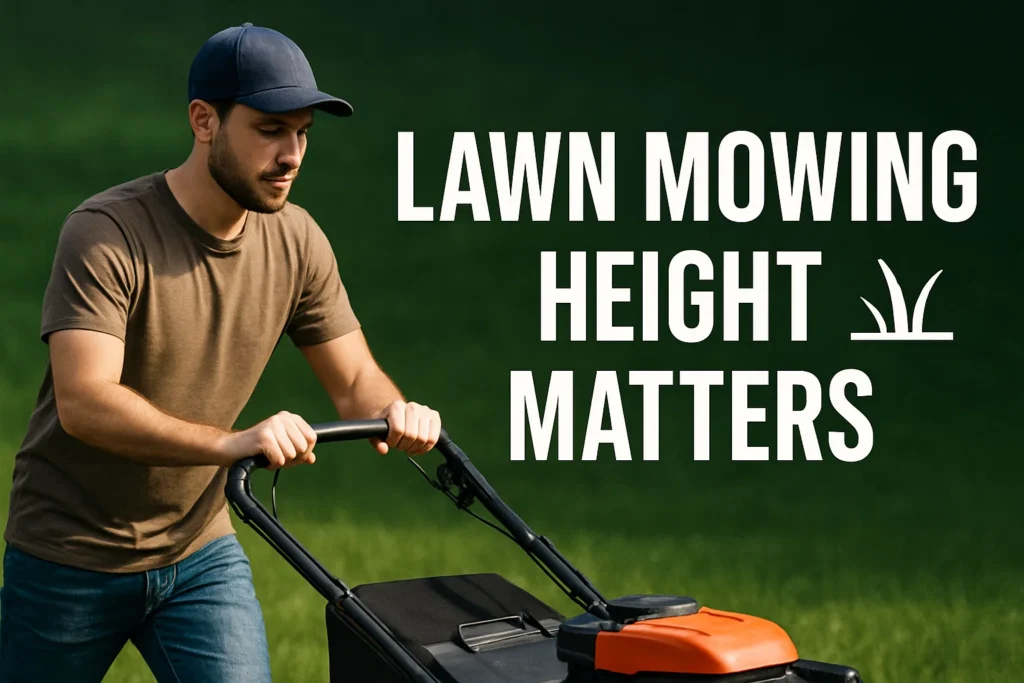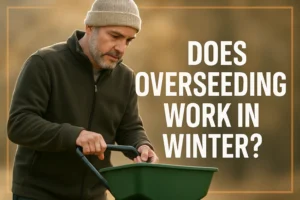A well-maintained lawn demands mowing at the right height. The level that you mow your lawn on directly influences the health, the looks and the cultivation of grass under varying conditions. Excessively mowing the grass can subject it to weakness, retardation of growth, and susceptibility to weeds and droughts, whereas proper height ensures stronger roots, deeper root retention, and a healthy green lawn. This guide elaborates on the importance of mowing height and gives clear suggestions on how to select and maintain the optimal mowing height that benefits your lawn and fits the type of grass.
The Importance of Proper Lawn Mowing Height
Mowing your lawn at the correct height is really the heart of having a yard that is full of good health, green and strong, and resistant to adverse weather and other difficulties in general. The height at which grass is cut affects everything from its ability to retain moisture and resist weeds to the strength of its root system. The root system, along with the whole plant of the turf, by mowing too short, is thus brightening the soil, making it lose its moisture quickly, and the turf becomes stressed, etc. Besides, this weakens the grass, which bugs and diseases will easily take advantage of.
Ideal mowing concentrates water on the roots as the soil is shaded from evaporation. The grass, taller maybe, provides stronger photosynthesis, which leads to healthier roots and a thicker lawn, which in turn competes better with the weed. Use of the right mowing height also significantly increases your lawn’s ability to go through the dry period without trouble. Thus, the need for extra watering as well as chemical treatments is limited.

Recommended Mowing Heights for Different Grass Types
The proper height of the mower blade should mainly be determined by the type of grass you have since each grass species thrives at different cutting lengths. The following are typical ideal mowing heights for commonly grown cool-season and warm-season grasses.
| Grass Type | Grass Category | Recommended Height (inches) |
| Kentucky Bluegrass | Cool-season | 2.5 – 3.5 |
| Tall Fescue | Cool-season | 3.0 – 4.0 |
| Perennial Ryegrass | Cool-season | 2.0 – 3.0 |
| Fine Fescue | Cool-season | 2.5 – 3.5 |
| Bermudagrass | Warm-season | 1.0 – 2.0 |
| Zoysiagrass | Warm-season | 1.5 – 2.5 |
| St. Augustinegrass | Warm-season | 2.5 – 3.75 |
| Centipedegrass | Warm-season | 1.5 – 2.0 |
| Bahiagrass | Warm-season | 3.0 |
| Buffalograss | Warm-season | 1.5 – 3.0 |
Changing the height of your cutting blade to fit the type of grass in your lawn as well as the different seasons, will result in the development of stronger roots in your lawn, it will be able to resist pests, lower its water requirement and keep a green and nice appearance all year round. A good practice that you should always keep in mind is not to let your lawn dry out by cutting more than one-third of the grass blade length at a time.
How to Measure and Set the Right Mowing Height
One of the best ways to ensure that you are cutting your lawn properly is by setting your lawn mower to the accurate height. This not only encourages the healthy growth of your lawn but also goes a long way to prevent damage. Below are the correct ways of measuring and adjusting the mowing height:
1. Look at the Manufacturer’s Guide
Adjustable mowers usually have the height setting, which is labeled on the deck or near the wheels. The manual should be used for guidance on the height ranges and adjustment methods.
2. Measure the Mower Blade Height:
- For safety, switch off the mower and disconnect the spark plug.
- Tip the mower on its side so the blade is accessible.
- A tape measure should be used to measure the shortest side of the lawnmower blade from the ground.
- Actually, the distance shows the cutting height.
3. Move the Mower Height:
- The majority of mowers have levers or knobs that are located near the wheels for the purpose of raising or lowering the cutting deck.
- Turn all the wheels the same amount so that the cut will be at the same level.
- Adjust the height to the level that is recommended for your grass type (refer to mowing height guides).
4. Use a Grass Gauge (Optional)
If you really want to know the grass height of your lawn, use a grass height gauge. Take a measurement of the grass blades, which will allow you to decide whether you should raise or lower the mower height.
5. Test and Observe
Once the height has been fixed, cut a small area of the lawn. Look at the quality of the cut and the amount of grass that has been trimmed. If you are cutting more than one-third of the blade length and the lawn looks stressed, change the setting.
Regularly measuring and setting the right mowing height will give you a healthy lawn and vibrant lawn that will be thick and have strong roots.
Seasonal Mowing Height Adjustments
By changing the height at which you mow your lawn depending on the different seasons, your grass will be able to stay healthy and strong all through the year. Different seasons mean different temperatures, moisture levels, and growth rates, which will determine the frequency and the length of your mowing. The following are the recommended mowing heights for both cool-season and warm-season grasses throughout the year:

Spring
• Cool-season grasses: Mowing at around 2.5-3 inches is suggested to bring the grass back to life and grow deep roots after the time of rest during winter.
• Warm-season grasses: It is advisable to start at a lower cutting level of about 1 to 1.5 inches to get rid of the browning caused by winter and to stimulate the growth of new shoots.
Summer
• Cool-season grasses: Increase the height of the cut to 3-3.5 or even 4 inches for tall fescue, allowing the shade of the roots and water saving with the sweat of the heat.
• Warm-season grasses: Keep the grass at 1.5 to 2.5 inches as these grasses are more heat resistant and can handle short cutting.
Fall
• Cool-season grasses: Decrease the height of the cut by a small margin, about 2-2.5 inches, so the lawn gets ready for winter and still carries on with photosynthesis.
• Warm-season grasses: Mow until the grass is dormant. Typically, at 1.5 to 2 inches, cuts provide the best prevention against matting and disease.
Winter
• Stressed and damaged parts should not be cut during dormancy. At the same time, fallen leaves and other debris should be removed from the lawn to prevent diseases from establishing.
Conclusion
Maintaining the proper mowing height is the key to having a great lawn. The right mowing will ensure that your grass supports strong roots, it will be less prone to dry up and infestations and keep your grass green and thick all year round. Thus, knowing your type of grass and changing the mowing heights according to the different seasons, you will be able to have a natural and beautiful lawn.
If you are looking for the help of a professional in the care of your lawn using natural and chemical-free products and expert mowing services, then you should definitely place your trust in Revamping Lawn LLC. Our team is committed to delivering the highest quality of services to help the health of your lawn and make it vibrant and sustainable. Contact us today to set up an appointment free of charge and let us take care of your lawn.
FAQs
The proper mowing height ensures that the roots stay healthy, the moisture is kept, and that the lawn is not infested with weeds or diseases.
Lawn mowing should be done frequently so as not to remove more than one-third of the grass blade at once. Hence, generally it is once a week during peak growing seasons.
Definitely, if you cut your lawn too short (scalping), it will be stressful to the grass, the roots will be weakened, and the soil can dry out because it is exposed.
The right way to tell the grass cutting height depends on the type of grass that you have – the cool-season grasses and warm-season grasses differ in their heights.
The answer is yes. If the mower is lifted during the hot, dry summer months, then your lawn is protected, whereas during spring and fall, lower cuts will be of support to the growth.
Overcutting at one time will make your lawn stressed, slow its growth, and at the same time can give rise to weed problems.





